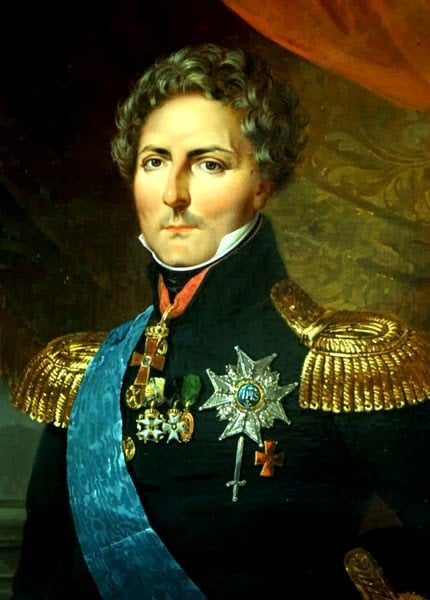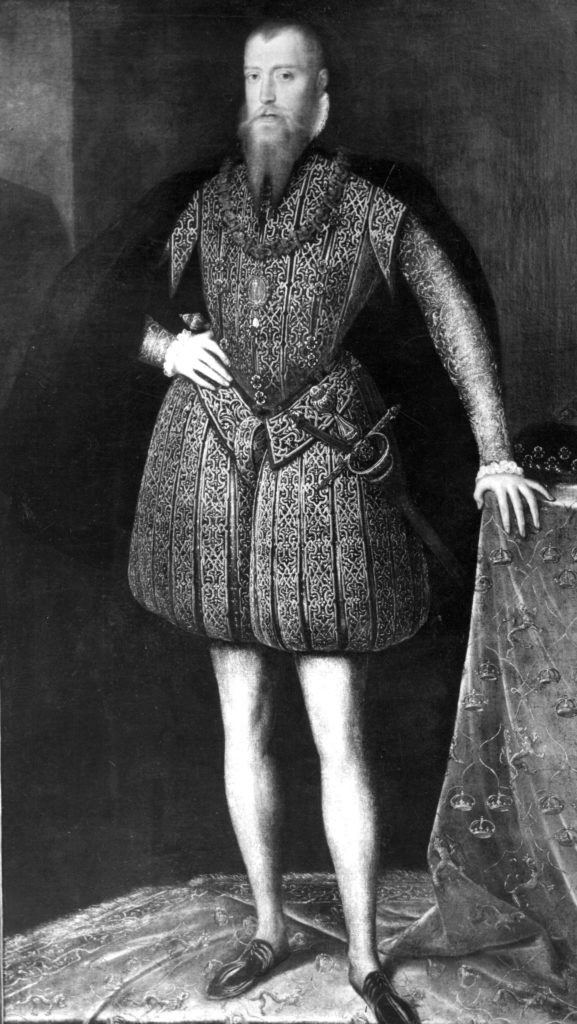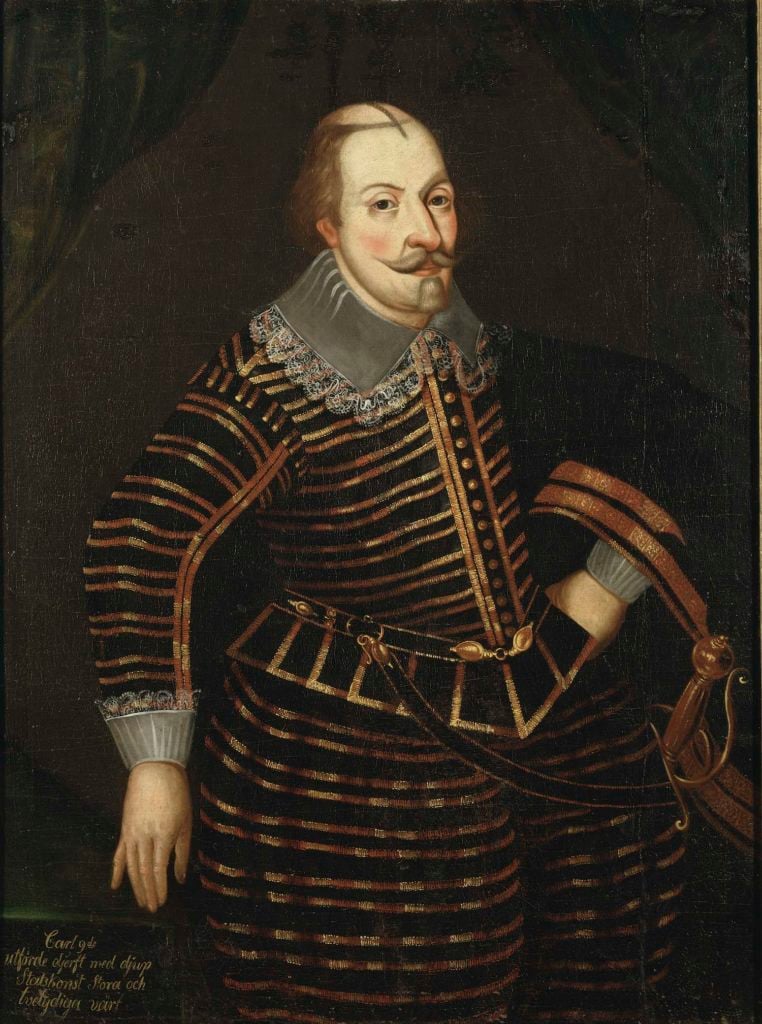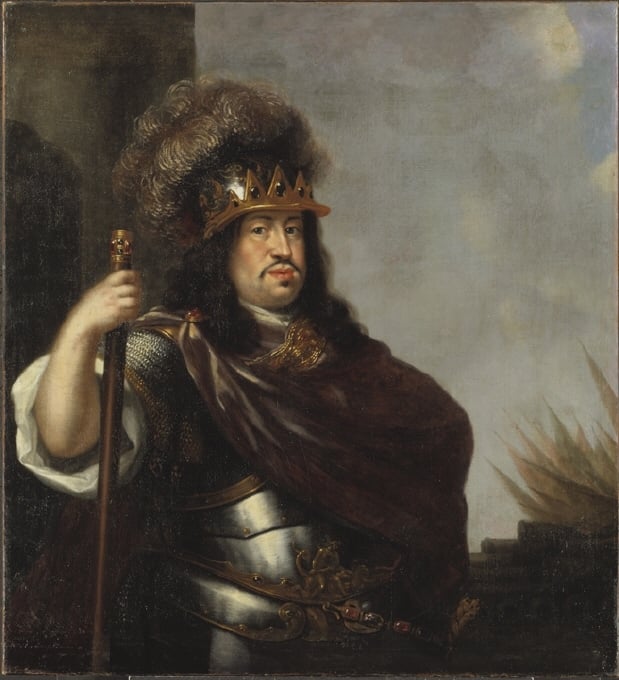Why Carl XVI Gustaf isn't actually Sweden's 16th King Carl

Sweden's King Carl XVI Gustaf celebrates 50 years on the throne this year. But why is he Carl XVI when there have only actually been ten King Carls?
First, a short background on Swedish royal names.
Carl XVI Gustaf's name is read Carl den sextonde Gustaf (Carl the sixteenth Gustaf), meaning he's the sixteenth Carl, and then his second first name is Gustaf. He's not the first Swedish king to have a double name. The most recent example is his grandfather Gustaf VI Adolf.
Another famous king with a double name is Frenchman Jean-Baptiste Jules Bernadotte, the first member of the Bernadotte house from whom the current line of the Swedish monarchy is descended, who took the name Karl XIV Johan when he succeeded Karl XIII in 1810.
But bizarrely, he was not Sweden's 14th Karl, and the current king is not the 16th (if we're being extra pedantic, the current king is the first ever Carl, as all his namesakes before him were Karls with a K, but let's not make this more complicated than it already is).
In fact, there never was a Karl I of Sweden, or a second, third, fourth, fifth or sixth for that matter.
The Local spoke to historian Dick Harrison to clear up the mystery of the missing Karls.
Karl XIV Johan. Credit: Artist unknown, public domain.
"The reason is the inventiveness of Renaissance historians," Harrison said.
"In the middle ages, no European monarchs, except a few popes, had numbers. People were simply called Edward or Henry or Olof or Johan, they were not called Johan the first, Johan the second, never, they were simply called by their names."
"But in the 15th and 16th centuries, this began to change," he explained.
At this time, Harrison said, Swedish kings realised that in order to be modern, like other monarchs in Germany, England, France or Denmark, for example, they should also start using numbers.
"But they didn't really know how many Eriks, Johans or Karls there had been. The inventiveness of Johannes Magnus changed this."
Johannes Magnus was Sweden's last-ever Catholic Archbishop, who lived in exile in Rome after King Gustav Vasa introduced the Protestant Reformation to Sweden in 1527.
He was responsible for the publication of the fantastically named Historia de omnibus Gothorum Sueonumque regibus, or The history of all Geatish and Swedish kings, in 1554.
The book is not only extremely anti-Danish, but also critical of King Gustav Vasa, who was responsible for Magnus' exile.
"Due to the reformation, he had to live in Rome, and there were hardly any Swedish Catholics in Italy, so he had a lot of free time which he used to write this very big book about the old kings of Sweden," said Harrison.
In his book, Magnus lists the entire lineage of 143 Swedish monarchs from Magog in 2216 BC – the same Magog listed in the Bible as a grandson of Noah – to Vasa who became king in 1520.
The only problem with Magnus' lineage is that the majority of it is either impossible to corroborate or entirely made up – making it difficult to assign any specific number to subsequent kings.
"He invented most of this history himself, because he was a patriot," Harrison told The Local.
"He had two main goals, that was to glorify Sweden and to make the Catholic world realise that Sweden should be brought back into the fold. So he really tried to make a big glorious history with lots of kings."
This book was published by his brother, Olaus Magnus, who sent a copy to Gustav Vasa, despite the fact that Vasa was their enemy.
"Gustav at first was delighted, a big book about the glory of Sweden, so he began to read, but quickly became furious because he realised that Johannes Magnus had invented tyrants resembling him and placed them in Swedish history. So he didn't really want to have anything to do with the book."
Gustav Vasa. Attributed to David Frumerie (1666). Nationalmuseum, public domain.
However, his sons – Erik and Johan – read it.
"Erik was heir to the throne, Johan was his little brother, and both of them liked it immensely, because it was exactly the kind of Renaissance literature they wanted. This placed Sweden on the historical map."
When Erik became king of Sweden in 1560, he used Magnus' book as a source when deciding what to call himself.
"He had found 13 Eriks – some of them were real, some were invented – so he called himself Erik XIV," said Harrison.
"When his brother dethroned him in 1568, he became Johan III, which was correct because there actually had been two Johans in Sweden before him."
King Erik XIV. Technically should have been Erik VIII or IX. Photo: Scanpix/TT
A couple of decades later, Erik and Johan's brother Karl became king, and chose to call himself Karl IX, after finding eight Karls in Magnus' book.
"Actually, most of those Karls were invented by Magnus, but Karl didn't care, he wanted a big number. Nine was a good number, because it meant that we had a long history of Karl kings before him," said Harrison.
"So from that moment, from the publication of Johannes Magnus book, and these three Vasa brothers glorifying intent to make Sweden great in the past, ever since then we've had inflated numbers on our Eriks and our Karls. Our Gustavs and our Johans are correct."
The first king on Magnus' list whose existence can actually be confirmed is Erik VII who ruled around the mid-900s, who according to Magnus' artistic licence was the 110th King of Sweden, and the seventh King Erik.
He wasn't actually referred to as Erik VII at the time, just Erik the Victorius or Erik Segersäll, and its unclear as to whether all the Eriks who followed him actually existed, either. The numeral is a result of counting backwards from Erik XIV in the 1500s.
Karl IX. Credit: Artist unknown/Nationalmuseum/public domain.
The first confirmed King Karl is Karl VII, who ruled in the 1160s.
"Karl VII existed, but he was actually number one," Harrison said.
Again, he wasn't known by this name back then either, rather he was Karl Sverkersson. His numeral is based on counting backwards from Karl IX.
Why hasn't Sweden updated its numbers now that we know they're not historically accurate?
"Because by tradition, you cannot change the king's name posthumously, because they used those names themselves. They used them in royal decrees, they signed documents with these numbers, so fiction became reality in political life, and you can't change that afterwards," Harrison explained.
"They decided, and we simply have to take it. As a result, in dictionaries, lexica or various history books, we sometimes have parenthesis: 'actually, he should be called that'."
"A royal name, when it is used as a royal name, becomes official. And we can't erase that from our history."
Changing the names of the Swedish royals to reflect history would also create confusion, Harrison said.
"For example, if we should change the name of our present king, and call him Carl X Gustaf, he would have exactly the same name as a warrior of the 17th century who invaded Poland and wreaked havoc all across northern Europe. That name is already taken by that king. We can't have two kings with exactly the same name."
"I think this is quite fun," he added. "We have a fictitious line of monarchs, and we treat them as if they have existed, although we know that they didn't."
Karl X Gustav. Hard to believe that anyone would confuse this king with Sweden's current king. Attributed to David Klöcker Ehrenstrahl. Nationalmuseum, Licence: (CC BY-SA)
The question of whether to use the wrong numbers for Swedish monarchs or not probably won't be an issue for a while after Carl XVI Gustaf, as the current heirs to the throne will be the first monarchs with their name: Crown Princess Victoria and her daughter, Estelle.
"I doubt Victoria will have a number," Harrison said. "But I don't know, it's up to her. She can have a number, she can change her name, she can add another name afterwards, that's the royal prerogative. My guess is that she will simply be called Victoria, she's a sensible young woman."
Comments
See Also
First, a short background on Swedish royal names.
Carl XVI Gustaf's name is read Carl den sextonde Gustaf (Carl the sixteenth Gustaf), meaning he's the sixteenth Carl, and then his second first name is Gustaf. He's not the first Swedish king to have a double name. The most recent example is his grandfather Gustaf VI Adolf.
Another famous king with a double name is Frenchman Jean-Baptiste Jules Bernadotte, the first member of the Bernadotte house from whom the current line of the Swedish monarchy is descended, who took the name Karl XIV Johan when he succeeded Karl XIII in 1810.
But bizarrely, he was not Sweden's 14th Karl, and the current king is not the 16th (if we're being extra pedantic, the current king is the first ever Carl, as all his namesakes before him were Karls with a K, but let's not make this more complicated than it already is).
In fact, there never was a Karl I of Sweden, or a second, third, fourth, fifth or sixth for that matter.
The Local spoke to historian Dick Harrison to clear up the mystery of the missing Karls.
"The reason is the inventiveness of Renaissance historians," Harrison said.
"In the middle ages, no European monarchs, except a few popes, had numbers. People were simply called Edward or Henry or Olof or Johan, they were not called Johan the first, Johan the second, never, they were simply called by their names."
"But in the 15th and 16th centuries, this began to change," he explained.
At this time, Harrison said, Swedish kings realised that in order to be modern, like other monarchs in Germany, England, France or Denmark, for example, they should also start using numbers.
"But they didn't really know how many Eriks, Johans or Karls there had been. The inventiveness of Johannes Magnus changed this."
Johannes Magnus was Sweden's last-ever Catholic Archbishop, who lived in exile in Rome after King Gustav Vasa introduced the Protestant Reformation to Sweden in 1527.
He was responsible for the publication of the fantastically named Historia de omnibus Gothorum Sueonumque regibus, or The history of all Geatish and Swedish kings, in 1554.
The book is not only extremely anti-Danish, but also critical of King Gustav Vasa, who was responsible for Magnus' exile.
"Due to the reformation, he had to live in Rome, and there were hardly any Swedish Catholics in Italy, so he had a lot of free time which he used to write this very big book about the old kings of Sweden," said Harrison.
In his book, Magnus lists the entire lineage of 143 Swedish monarchs from Magog in 2216 BC – the same Magog listed in the Bible as a grandson of Noah – to Vasa who became king in 1520.
The only problem with Magnus' lineage is that the majority of it is either impossible to corroborate or entirely made up – making it difficult to assign any specific number to subsequent kings.
"He invented most of this history himself, because he was a patriot," Harrison told The Local.
"He had two main goals, that was to glorify Sweden and to make the Catholic world realise that Sweden should be brought back into the fold. So he really tried to make a big glorious history with lots of kings."
This book was published by his brother, Olaus Magnus, who sent a copy to Gustav Vasa, despite the fact that Vasa was their enemy.
"Gustav at first was delighted, a big book about the glory of Sweden, so he began to read, but quickly became furious because he realised that Johannes Magnus had invented tyrants resembling him and placed them in Swedish history. So he didn't really want to have anything to do with the book."
However, his sons – Erik and Johan – read it.
"Erik was heir to the throne, Johan was his little brother, and both of them liked it immensely, because it was exactly the kind of Renaissance literature they wanted. This placed Sweden on the historical map."
When Erik became king of Sweden in 1560, he used Magnus' book as a source when deciding what to call himself.
"He had found 13 Eriks – some of them were real, some were invented – so he called himself Erik XIV," said Harrison.
"When his brother dethroned him in 1568, he became Johan III, which was correct because there actually had been two Johans in Sweden before him."
A couple of decades later, Erik and Johan's brother Karl became king, and chose to call himself Karl IX, after finding eight Karls in Magnus' book.
"Actually, most of those Karls were invented by Magnus, but Karl didn't care, he wanted a big number. Nine was a good number, because it meant that we had a long history of Karl kings before him," said Harrison.
"So from that moment, from the publication of Johannes Magnus book, and these three Vasa brothers glorifying intent to make Sweden great in the past, ever since then we've had inflated numbers on our Eriks and our Karls. Our Gustavs and our Johans are correct."
The first king on Magnus' list whose existence can actually be confirmed is Erik VII who ruled around the mid-900s, who according to Magnus' artistic licence was the 110th King of Sweden, and the seventh King Erik.
He wasn't actually referred to as Erik VII at the time, just Erik the Victorius or Erik Segersäll, and its unclear as to whether all the Eriks who followed him actually existed, either. The numeral is a result of counting backwards from Erik XIV in the 1500s.
The first confirmed King Karl is Karl VII, who ruled in the 1160s.
"Karl VII existed, but he was actually number one," Harrison said.
Again, he wasn't known by this name back then either, rather he was Karl Sverkersson. His numeral is based on counting backwards from Karl IX.
Why hasn't Sweden updated its numbers now that we know they're not historically accurate?
"Because by tradition, you cannot change the king's name posthumously, because they used those names themselves. They used them in royal decrees, they signed documents with these numbers, so fiction became reality in political life, and you can't change that afterwards," Harrison explained.
"They decided, and we simply have to take it. As a result, in dictionaries, lexica or various history books, we sometimes have parenthesis: 'actually, he should be called that'."
"A royal name, when it is used as a royal name, becomes official. And we can't erase that from our history."
Changing the names of the Swedish royals to reflect history would also create confusion, Harrison said.
"For example, if we should change the name of our present king, and call him Carl X Gustaf, he would have exactly the same name as a warrior of the 17th century who invaded Poland and wreaked havoc all across northern Europe. That name is already taken by that king. We can't have two kings with exactly the same name."
"I think this is quite fun," he added. "We have a fictitious line of monarchs, and we treat them as if they have existed, although we know that they didn't."
The question of whether to use the wrong numbers for Swedish monarchs or not probably won't be an issue for a while after Carl XVI Gustaf, as the current heirs to the throne will be the first monarchs with their name: Crown Princess Victoria and her daughter, Estelle.
"I doubt Victoria will have a number," Harrison said. "But I don't know, it's up to her. She can have a number, she can change her name, she can add another name afterwards, that's the royal prerogative. My guess is that she will simply be called Victoria, she's a sensible young woman."





Join the conversation in our comments section below. Share your own views and experience and if you have a question or suggestion for our journalists then email us at [email protected].
Please keep comments civil, constructive and on topic – and make sure to read our terms of use before getting involved.
Please log in here to leave a comment.